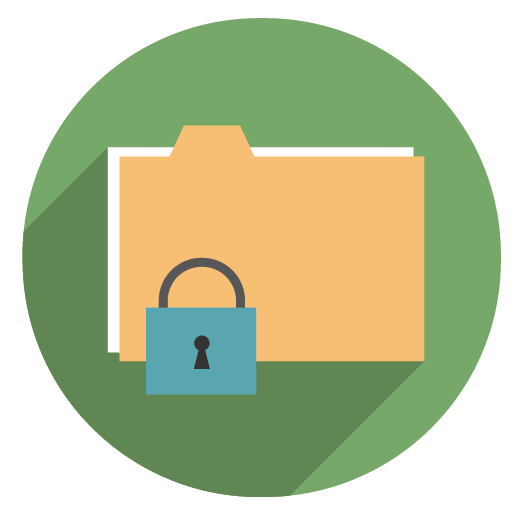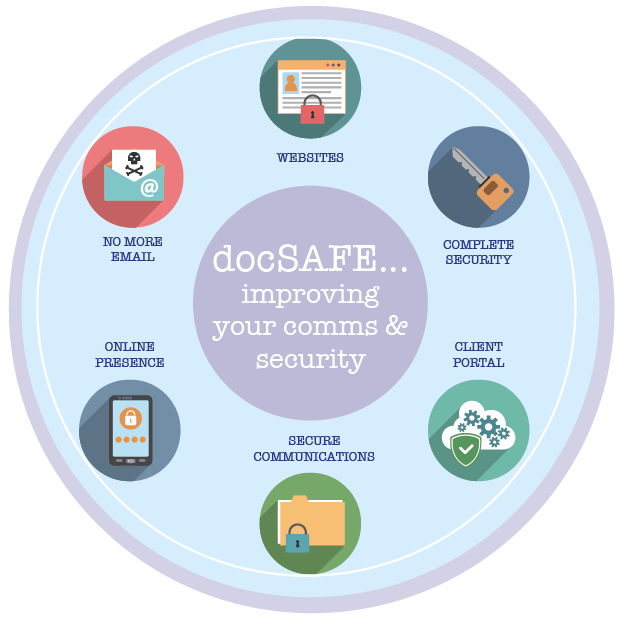Secure communications have become bywords for so many things – we define it as making sure that every way you communicate is safe from misappropriation in any form.
 Your website – you may be quietly thinking that your website wouldn’t be of interest to a hacker – after all, you’re just a medium sized accountancy firm minding your own business. However – hackers do and can access your website for more than just the data. We were asked to look at a brand new client site recently and found hundreds of hidden links that took visitors away from the website. We soon sorted out a new website with extra layers of security to prevent it happening again.
Your website – you may be quietly thinking that your website wouldn’t be of interest to a hacker – after all, you’re just a medium sized accountancy firm minding your own business. However – hackers do and can access your website for more than just the data. We were asked to look at a brand new client site recently and found hundreds of hidden links that took visitors away from the website. We soon sorted out a new website with extra layers of security to prevent it happening again.
Your emails – whether by human error or malicious intervention, data flying around via email simply isn’t secure. Sending sensitive (or indeed any) client information by email is subject to it going to the wrong person or leaving it open for attack. We offer a secure portal where the information stays within the confines of docSAFE – available to be accessed, collected, collaborated on, signed or exchanged – all with complete confidence. Our document exchange system allows you to also send messages, not just exchange files.
Ask us more – we build and develop docSAFE like a multi-layered fortress: safe, secure and effective. Your clients will thank you for it.
 Our portfolio of services is all based around security and communications starting with our client portfolio, docSAFE. This allows professionals to manage all of their communications from a central place – like a virtual filing cabinet. We have implemented several layers of security which means that your information is safe – and more importantly for your business, your clients’ data is safe.
Our portfolio of services is all based around security and communications starting with our client portfolio, docSAFE. This allows professionals to manage all of their communications from a central place – like a virtual filing cabinet. We have implemented several layers of security which means that your information is safe – and more importantly for your business, your clients’ data is safe. When we first developed docSAFE, our secure client portal for professional firms, we were definitely thinking about addressing the issue of exchanging sensitive data in the most effective way – in a way that can’t be compromised and leave our professional clients open to hackers and human errors.
When we first developed docSAFE, our secure client portal for professional firms, we were definitely thinking about addressing the issue of exchanging sensitive data in the most effective way – in a way that can’t be compromised and leave our professional clients open to hackers and human errors. What a long way we’ve come in the past few years. From websites that invested heavily in words and told the visitor EVERYTHING to a more sophisticated, image-led approach that tempts the user into finding out more. This is a broad overview of how websites have changed but of course there is so much more and, importantly, much more to come…
What a long way we’ve come in the past few years. From websites that invested heavily in words and told the visitor EVERYTHING to a more sophisticated, image-led approach that tempts the user into finding out more. This is a broad overview of how websites have changed but of course there is so much more and, importantly, much more to come… What is http, let alone https? Well, http – the prefix to your web address stands for “Hypertext Transfer Protocol” and with the additional s? “Hypertext Transfer Protocol Secure”. The s actually stands for Secure Socket Layer Secure and that extra s makes all the difference for 3 key reasons.
What is http, let alone https? Well, http – the prefix to your web address stands for “Hypertext Transfer Protocol” and with the additional s? “Hypertext Transfer Protocol Secure”. The s actually stands for Secure Socket Layer Secure and that extra s makes all the difference for 3 key reasons.